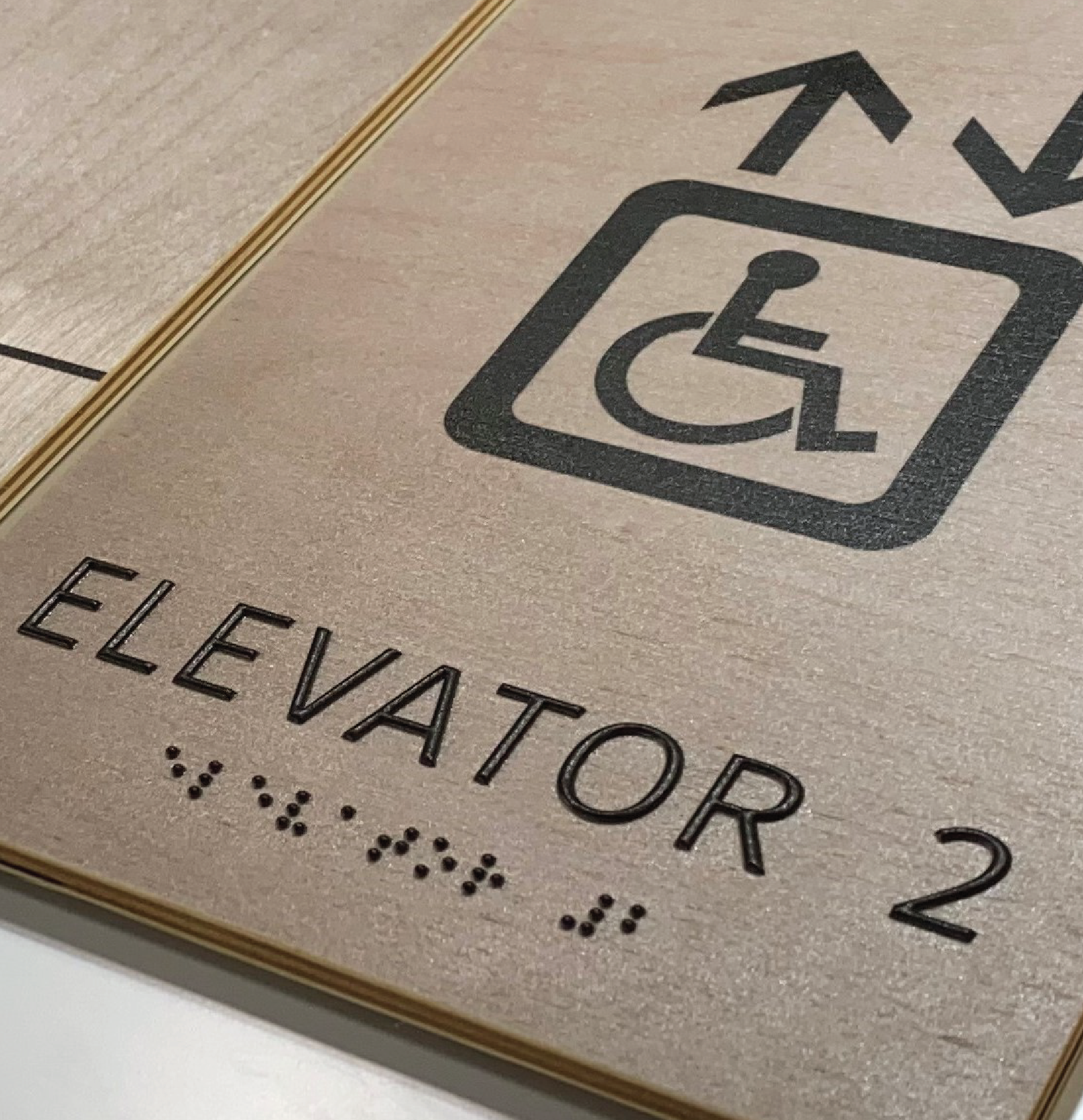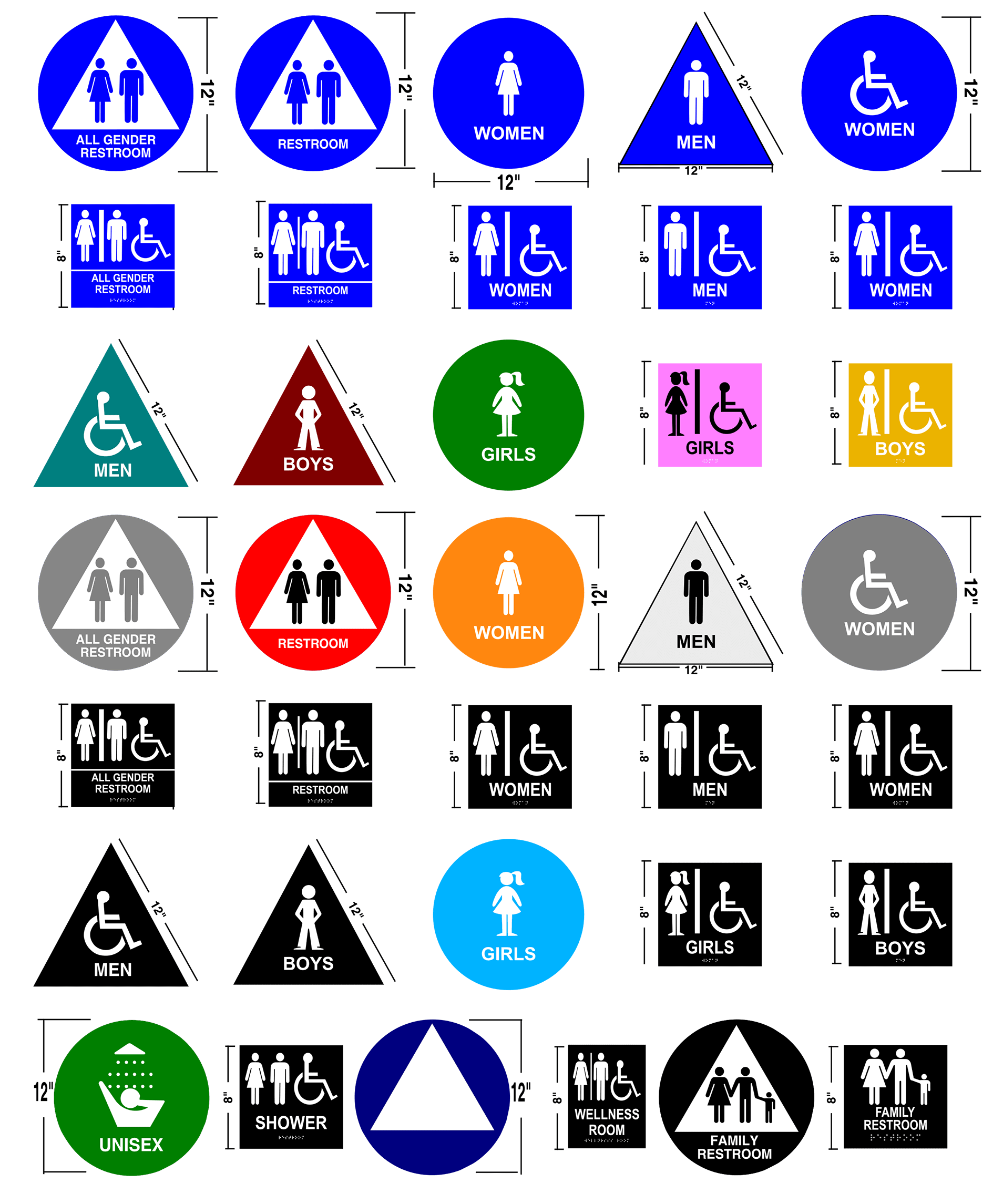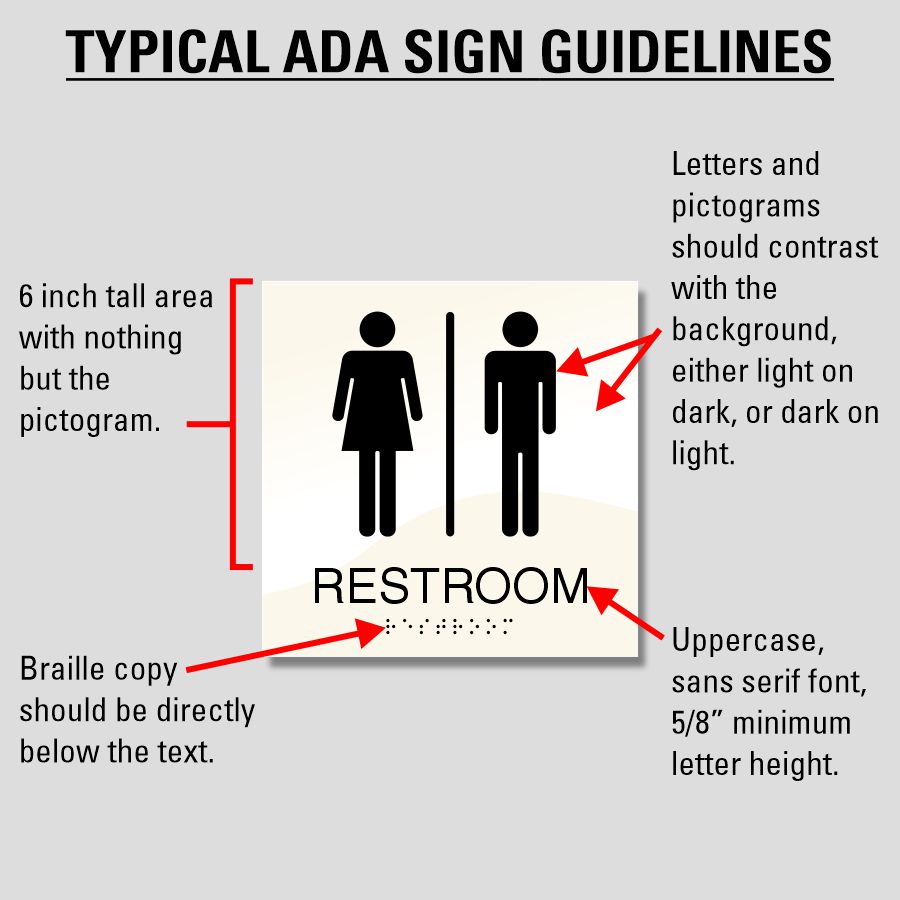The Function of ADA Signs in Following Access Standards
Exploring the Trick Functions of ADA Indications for Boosted Ease Of Access
In the realm of accessibility, ADA signs act as silent yet powerful allies, ensuring that rooms are comprehensive and accessible for people with specials needs. By incorporating Braille and responsive aspects, these indications break obstacles for the aesthetically damaged, while high-contrast color pattern and understandable font styles satisfy varied aesthetic needs. Furthermore, their calculated positioning is not approximate yet rather a calculated effort to facilitate seamless navigation. Beyond these features lies a deeper narrative concerning the evolution of inclusivity and the continuous dedication to developing fair rooms. What extra could these indications represent in our search of global ease of access?
Value of ADA Conformity
Ensuring compliance with the Americans with Disabilities Act (ADA) is important for promoting inclusivity and equivalent gain access to in public areas and work environments. The ADA, enacted in 1990, mandates that all public centers, companies, and transportation solutions fit people with disabilities, guaranteeing they delight in the very same civil liberties and chances as others. Compliance with ADA standards not only meets legal commitments yet also boosts an organization's credibility by showing its commitment to variety and inclusivity.
One of the key elements of ADA conformity is the execution of available signage. ADA signs are developed to make certain that individuals with handicaps can quickly browse through buildings and areas.
Furthermore, sticking to ADA regulations can reduce the risk of lawful consequences and potential fines. Organizations that fall short to adhere to ADA guidelines might face charges or lawsuits, which can be both harmful and economically burdensome to their public picture. Thus, ADA compliance is essential to fostering an equitable atmosphere for everybody.
Braille and Tactile Elements
The incorporation of Braille and tactile elements into ADA signs personifies the principles of accessibility and inclusivity. These features are critical for individuals that are blind or aesthetically damaged, allowing them to navigate public areas with greater independence and confidence. Braille, a responsive writing system, is important in giving created information in a style that can be conveniently perceived through touch. It is typically put under the corresponding text on signage to ensure that individuals can access the info without aesthetic aid.
Tactile aspects extend past Braille and consist of increased personalities and signs. These parts are made to be noticeable by touch, enabling people to recognize area numbers, toilets, departures, and other vital locations. The ADA sets specific standards pertaining to the size, spacing, and placement of these responsive components to enhance readability and guarantee uniformity across different environments.

High-Contrast Color Design
High-contrast color plans play a critical role in boosting the presence and readability of ADA signage for people with visual problems. These plans are crucial as they take full advantage of the difference in light reflectance in between text and background, making certain that indications are conveniently discernible, also from a range. The Americans with Disabilities Act (ADA) mandates using specific shade contrasts to accommodate those with restricted vision, making it a vital element of conformity.
The efficacy of high-contrast shades exists in their capability to attract attention in numerous lighting conditions, consisting of poorly lit environments and locations with glare. Commonly, dark text on a light background or light message on a dark history is employed to accomplish optimum contrast. Black message on a yellow or white history offers a raw aesthetic difference that assists in quick acknowledgment and understanding.

Legible Fonts and Text Dimension
When considering the style of ADA signs, the selection of understandable typefaces and proper text size can not be overstated. The Americans with Disabilities Act (ADA) mandates that fonts must be not italic and sans-serif, oblique, manuscript, extremely ornamental, or of uncommon kind.
The dimension of the text also plays a pivotal duty in accessibility. According to ADA guidelines, the minimal text height need to be 5/8 inch, and it must boost proportionally with seeing distance. This is particularly crucial in public areas where signage needs to be read promptly and precisely. Consistency in message size adds to a cohesive aesthetic experience, aiding people in navigating settings efficiently.
Moreover, spacing in between lines and letters is integral to clarity. Adequate spacing protects against characters from showing up crowded, enhancing readability. By sticking to these standards, developers can substantially improve access, making sure that signs serves its designated objective for all individuals, no matter of their visual abilities.
Reliable Placement Approaches
Strategic placement of ADA signs is essential for making best use visit the site of ease of access and making certain compliance with legal requirements. Effectively located signs direct individuals with specials needs properly, facilitating navigation in public areas. Secret considerations consist of closeness, elevation, and presence. ADA standards stipulate that indications need to be mounted at an elevation in between 48 to 60 inches from the ground to guarantee they are within the line of view for both standing and seated people. This basic height range is vital for inclusivity, making it possible for mobility device customers and people of varying heights to gain access to details easily.
Furthermore, indications should be placed beside the latch side of doors to allow easy recognition prior to entry. This positioning assists individuals locate areas and areas without obstruction. In instances where there is no door, signs should be positioned on the closest adjacent wall surface. Consistency in indication positioning throughout a center improves predictability, decreasing confusion and boosting overall user experience.

Final Thought
ADA indicators play a crucial duty in advertising availability by incorporating functions that deal with the needs of individuals with disabilities. These elements jointly cultivate a comprehensive environment, underscoring the importance of ADA conformity in making certain equivalent access for all.
In the world of ease of access, ADA indications serve as quiet yet effective allies, making sure that spaces are inclusive and accessible for people with impairments. The ADA, enacted in 1990, mandates that all public centers, companies, and transport solutions suit individuals with specials needs, guaranteeing they take pleasure in the very same civil liberties and chances as others. ADA Signs. ADA signs are made to guarantee that people with impairments can easily browse through areas and buildings. ADA standards stipulate that indicators ought to be mounted at a height in between 48 to 60 inches from the ground to ensure they are within the line of view for both visit here standing and seated individuals.ADA indicators play a crucial role in promoting accessibility by incorporating features that resolve the requirements of people with handicaps